Infused with garlic, mustard seed, and fresh dill, these tender pickled asparagus spears boast a crisp, refreshing taste that's perfect for spring snacking.
If you're a fan of pickles, get ready to be amazed by the delightful flavor of pickled asparagus.
No canning is required, just 10 minutes of prep time to elevate your salads or garnish your favorite cocktails (try Bloody Mary's!).
Side dishes and condiments are often the show-stoppers at holiday dinners.
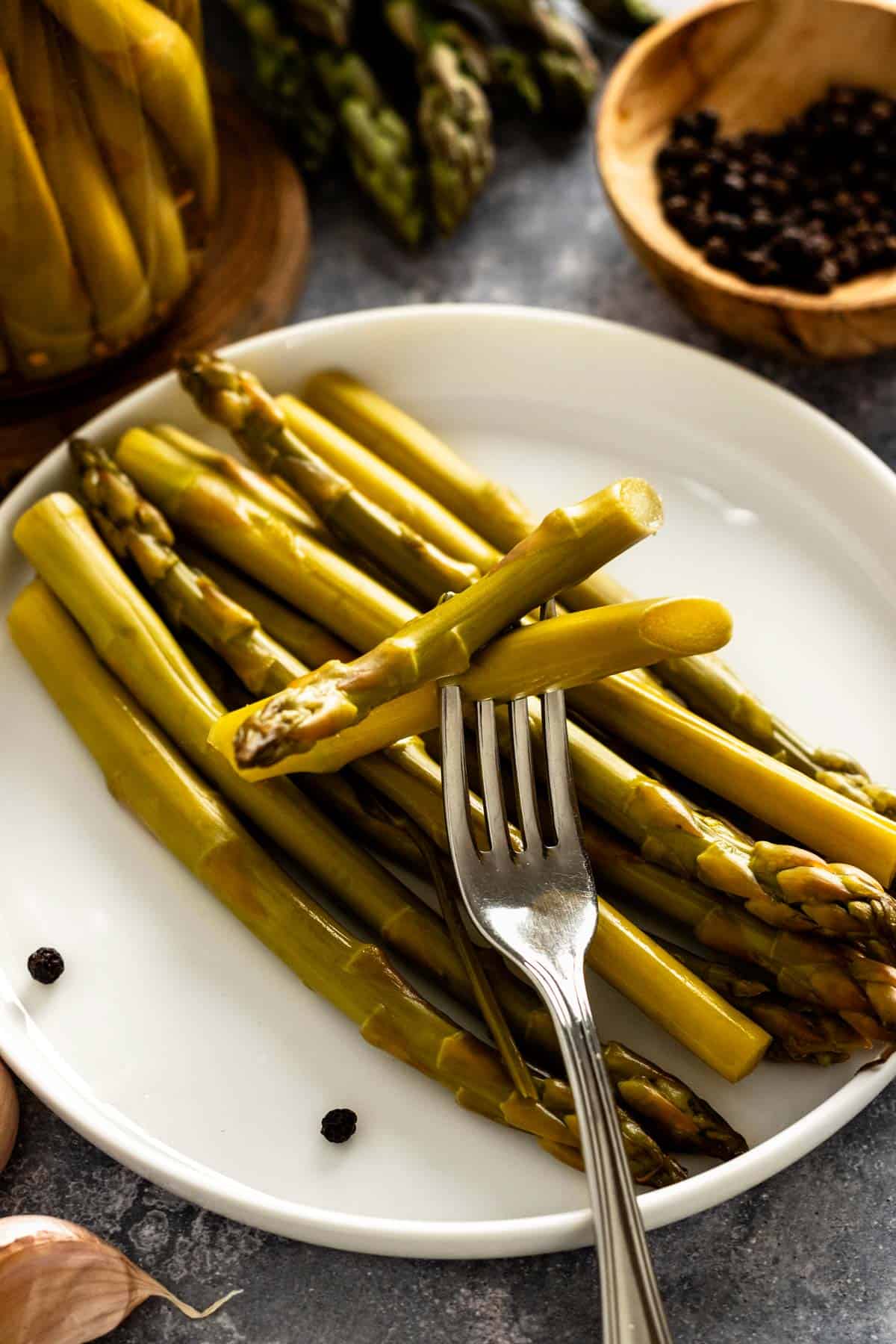
This recipe is a must for our festive gatherings, along with pickled radish, pickled cabbage, green bean casserole, creamy mashed potatoes and ham and potato casserole, just to name a few!
Jump To
- Why It's Yummy
- Love Easy Asparagus Recipes? Try These Next!
- Ingredients
- How To Sterilize Jars
- Instructions
- How To Choose The Best Asparagus
- How To Trim Asparagus
- Tips
- Serving Suggestions
- Pickled Asparagus - Is it Healthy?
- Freezing And Storing Instructions
- More Spring Veggie Recipes
- Variations
- FAQs
- Thinking About Dessert? Try These!
- Recipe
- Comments
Why It's Yummy
- Great way to preserve veggies - Asparagus season is short but sweet, and my refrigerator-pickled asparagus recipe is a must-try! Make it today, and tomorrow you'll have tasty pickled veggies to enjoy.
- Pairs well with other dishes - It's a side dish that your guests and family will love and works well with many other appetizers such as charcuterie boards, taco boards, bruschettas, deviled eggs.
Love Easy Asparagus Recipes? Try These Next!
Asparagus is so versatile and delicious on its own, don’t miss our readers' favorite asparagus recipes!
We are also loving these healthy asparagus fries!
Ingredients
The full recipe and ingredients can be found in the recipe card below this post.

This is a quick pickled asparagus recipe that doesn't require canning and pickles can be enjoyed after 24 hours!
Here's what you'll need:
- Asparagus - For this recipe, you'll need 1 pound of asparagus, which is typically the size of the bundles sold at grocery stores. You have the option to go for either thick or thin asparagus. For pickling recipes, I always suggest using medium or thinner ones since they pickle faster and don't require blanching beforehand.
- Vinegar - You can use either apple cider vinegar or distilled white vinegar. Ensure that the vinegar you use has at least 5% acidity, which is typically found in most grocery store varieties.
- Water - We need it to balance out the vinegar flavor.
- Salt - For pickling, you can choose different salts: I like to use very fine sea salt, kosher salt, or pickling salt. Pickling salt is very fine salt that dissolves in the brine easily. But it is not necessary and you can use simple sea salt.
- Seasonings and spices - I used simple ingredients but to save time you can go for store-bought pickling spice which typically consists of similar ingredients such as mustard seeds, celery seed, peppercorns, dill, and bay leaves. Or use one of these popular pickling spice substitutes.
- Garlic - Is essential for the best pickles! I wouldn’t leave it out but if you don’t like the flavor feel free to skip it.
- Sugar - Don’t skip this one either. Its sweetness is essential to balance out the tanginess of the vinegar.
How To Sterilize Jars
Properly sterilizing the jars is essential to ensure the safety and preservation of your marinated asparagus.
Follow these simple steps:
- Wash the jars - thoroughly wash the glass jars and their lids with hot, soapy water. Rinse them well to remove any soap residue.
- Boil the jars - submerge the washed jars in a large pot of boiling water, ensuring they are fully immersed. Boil the jars for about 10 minutes to sterilize them effectively.
- Boil the lids - in a separate pot, boil the lids and bands, if using for about 5 minutes.
- Dry the jars - carefully remove the jars, lids, and bands from the boiling water using jar tongs or a clean towel. Place them on a clean, dry surface, allowing them to air dry completely before using.
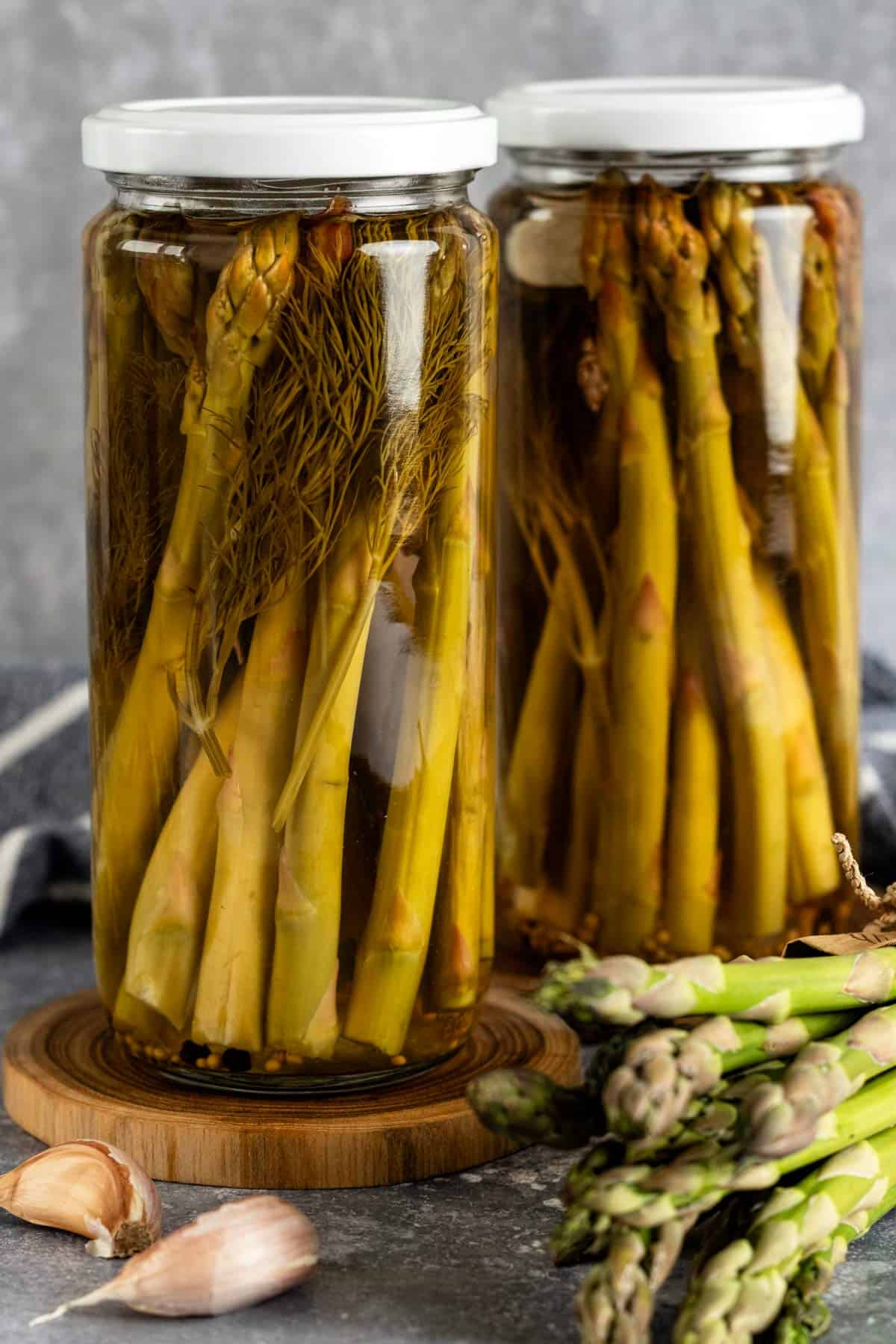
Instructions
Prepare two sterilized 17-ounce jars. In each jar, add peppercorns, garlic cloves, and fresh dill sprigs.

If needed, trim off the bottom of the asparagus spears and cut them in half crosswise to fit into the jars.
Place the asparagus in the jars.
In a medium saucepan, combine water, kosher salt, and sugar.
Stir over medium heat until the salt and sugar have dissolved.
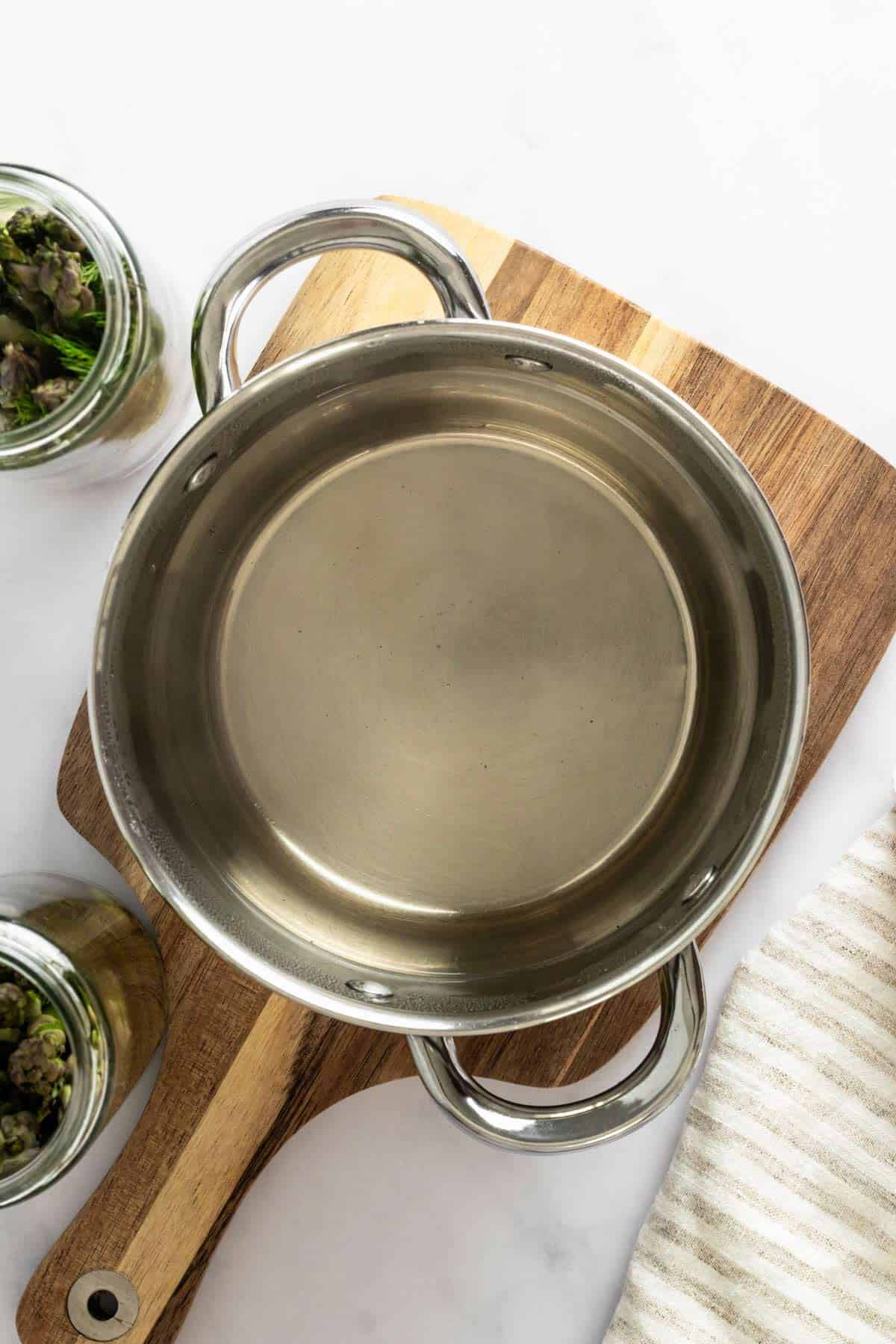

Add vinegar and bring the mixture to a gentle boil over medium heat.
Remove the saucepan from the stovetop.
Carefully and slowly pour the hot vinegar mixture into the jars, leaving about ½ inch of space from the top.
Seal the jars with lids and let them cool at room temperature.
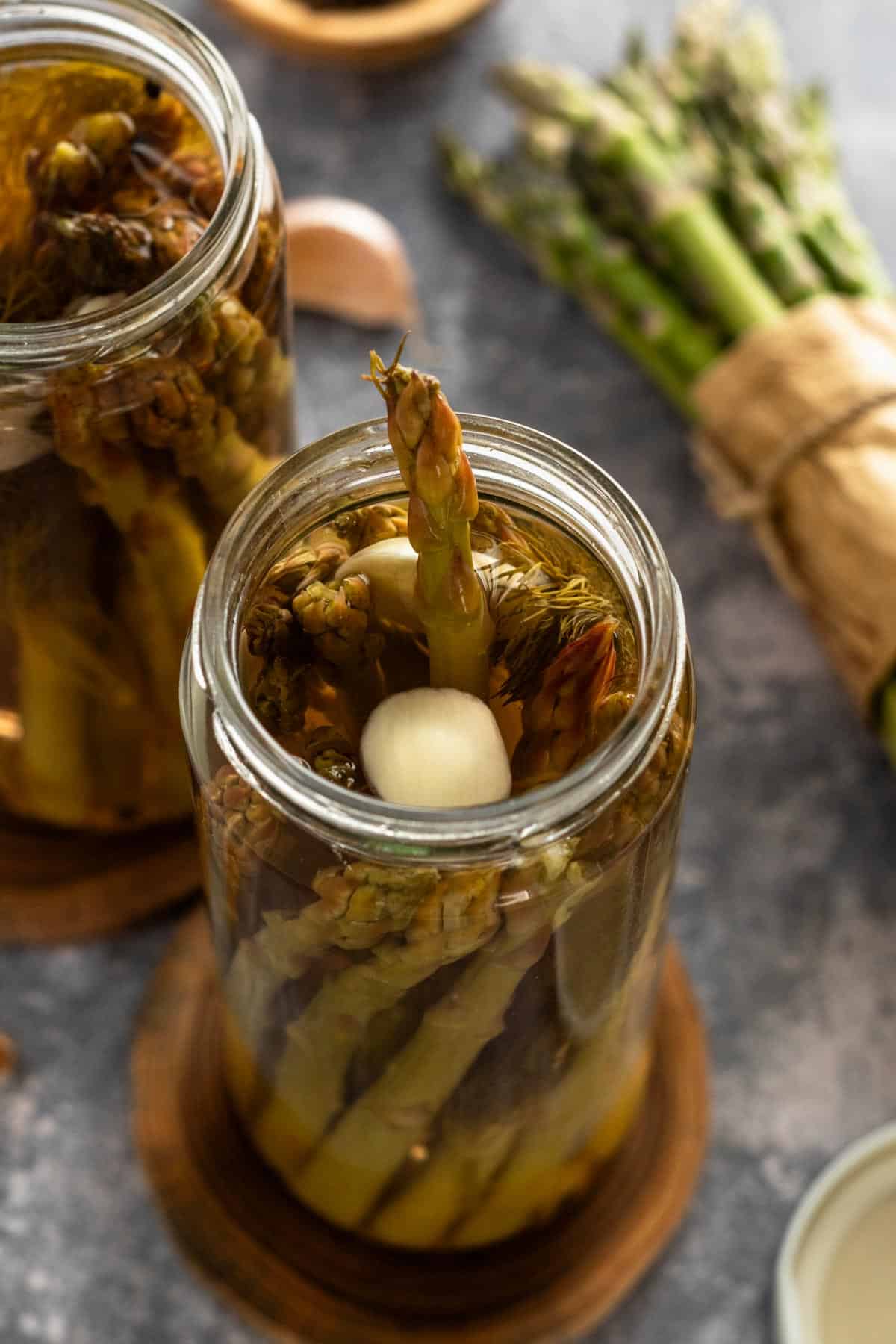
Once cooled, refrigerate the jars. Asparagus pickles will be ready to enjoy after 24 hours.
You can store this pickled asparagus in the fridge for up to 3 weeks.
How To Choose The Best Asparagus
Picking the perfect asparagus is essential for top-notch pickled veggies.
And the best time to make this recipe is during asparagus season when it's at its peak of freshness (however it is available all year).
Look for vibrant green hues and firm stalks while shopping.
Opt for uniform thickness, steering clear of any wrinkled or soft spots – that's the key to the best-pickled asparagus!
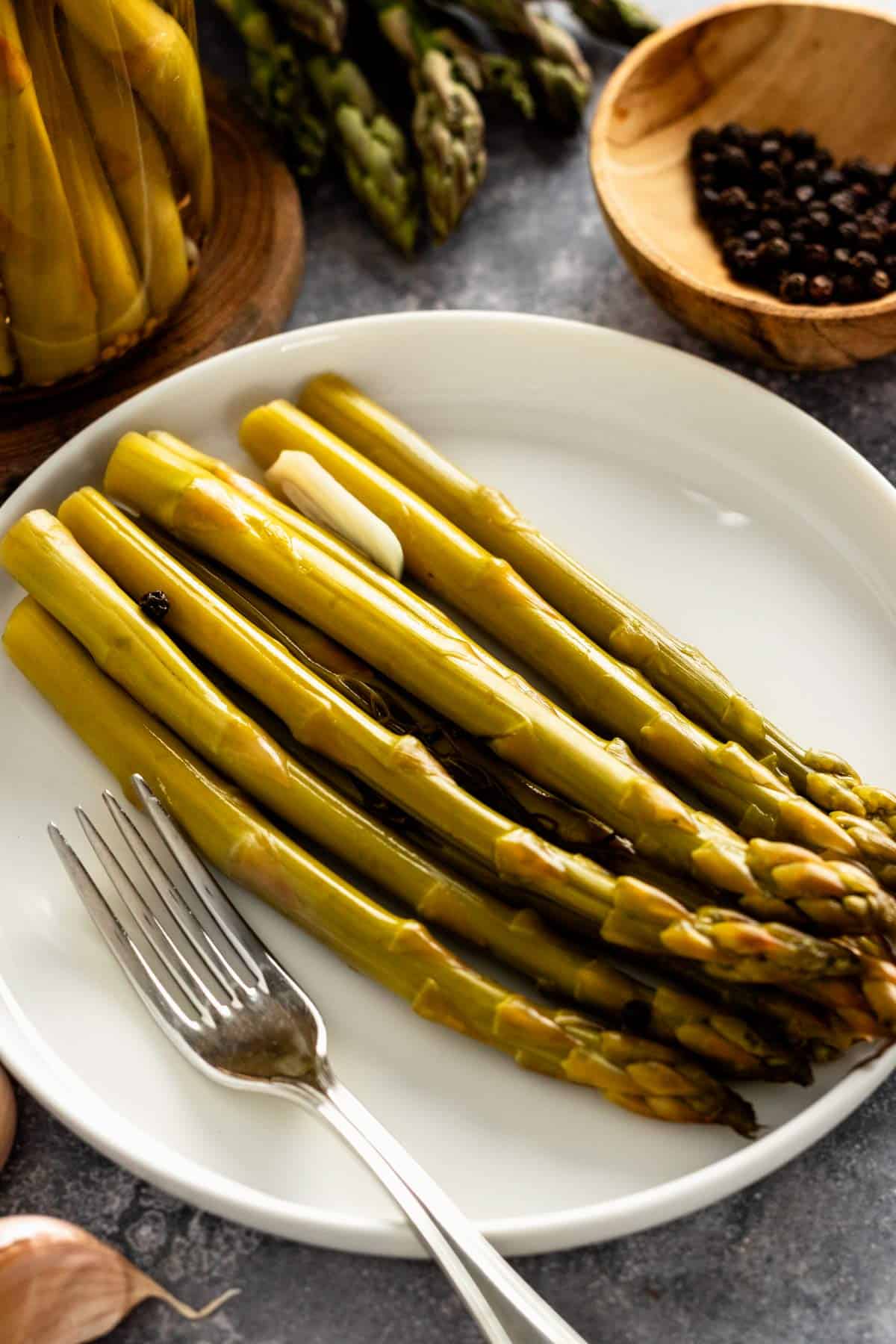
How To Trim Asparagus
Prepare the asparagus for cooking by removing the tough woody ends of the asparagus.
Simply bend each spear gently until it naturally snaps, and discard the tough ends.
Alternatively, you can use a chef's knife to trim about 1-2 inches from the bottom of the spears.
Tips
- Great addition - For added complexity and depth chopped shallots are a popular addition to the brine.
- Crispy pickled asparagus - If you want your asparagus extra crispy use larger stalks of asparagus, just make sure they will fit in the jars.
- Use fresh asparagus - Opt for fresh, high-quality asparagus for the best flavor and texture in your pickled asparagus. Choose spears that are crisp, vibrant green, and free from blemishes.
- For even pickling, try to choose asparagus spears of similar size so they pickle uniformly.
- Label each jar with the pickling date to keep track of how long the pickled asparagus has been stored. This will help you monitor the best time to consume them.
- For recipe success take care to read instructions and measure out your ingredients accurately. Neglecting to follow the ratios may lead to an unbalanced flavor in the pickling brine.
- Ensure that the pickling brine completely covers the vegetables so they can pickle evenly and stay fresh for longer.
- Choose the right jars or containers suitable for pickling, using containers that are not designed for food storage can lead to unsafe results.
- Seal the jars tightly - Inadequate sealing can allow air and bacteria to enter the jars, compromising the pickled veggies' shelf life and safety.
- Let the jarred asparagus marinate for a minimum of 24 hours up to 3 days. The longer they marinate, the more tender and flavorful they become.
Serving Suggestions
How to eat pickled asparagus?
We like to keep it simple and use it for side dishes, snacking on topping up salads, and grain bowls. Here are more popular options:
- Use asparagus as a cocktail garnish.
- Top your deviled eggs or avocado deviled eggs with finely chopped pickled asparagus.
- Serve on a crudite platter, cheese board, or charcuterie board.
- With bruschettas and sandwiches and my favorite avocado toast!
Pickled Asparagus - Is it Healthy?
Does pickled asparagus have nutritional value?
Asparagus on its own has plenty of health benefits, packed with fiber and an array of essential nutrients like Vitamin A, C, E, K, B6, Calcium, Iron, and more.
It also contains probiotics, making it a fantastic choice for promoting digestion in your meals.
However, when pickling asparagus, keep in mind that you're introducing a fair amount of salt and sugar.
Additionally, if you're canning it, some of the nutrients and probiotics may be lost due to the heating process.
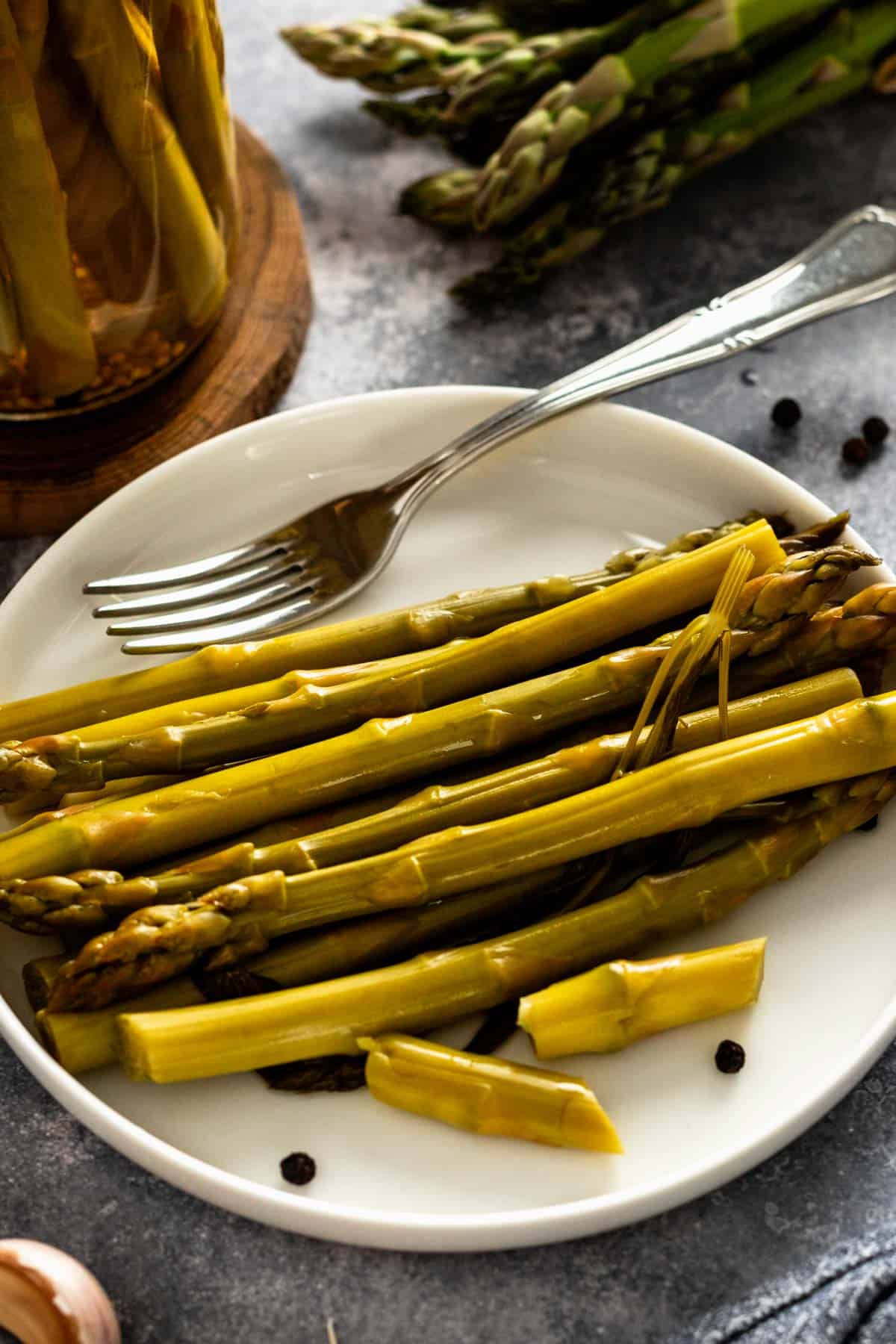
Freezing And Storing Instructions
This recipe is for quick asparagus pickles and is not designed for long-term storage.
Keep the pickled asparagus refrigerated at all times and use within 3 weeks.
More Spring Veggie Recipes
Variations
- Spicy pickled asparagus - add crushed red pepper flakes or sliced chili peppers to the pickling liquid for an extra kick of heat and bold flavor. Or Korean coarse ground gochugaru tastes delicious here too. For more Korean flavors, try our spicy cucumber salad.
- Lemon and thyme pickled asparagus - no wonder asparagus is often served with lemon like in our easy asparagus pasta as it pairs beautifully with this green veggie. Add lemon slices and fresh thyme to the pickling liquid for a refreshing and citrusy twist.
- Turmeric and ginger pickled asparagus - add some fresh turmeric and ginger for a vibrant, earthy, and slightly spicy taste.
FAQs
Distilled white vinegar, rice vinegar or apple cider vinegar is also fine. Just make sure that whatever vinegar you are using is at least 5-6 % acidity.
You can eat it after 24 hours of marinating in the fridge. However, the longer asparagus marinates, the more tender and flavorful it becomes (you can leave it to marinate for 3 days).
Homemade pickled juice contains health benefits and can help with gut health.
These little specks are called rutin and can naturally occur in canned asparagus recipes. They are caused by heating asparagus with vinegar and are safe to eat. However, this should not happen with our non-canning quick diy pickled asparagus recipe.
When selecting mason jars for this recipe, any jar with fitted lids will work just fine. However, if you want a perfect fit for asparagus, consider using appropriate asparagus jars designed to be taller and accommodate the height of these veggies.
Yes. Once cooled, it's ready to be eaten. However, for the best flavor experience, allow the asparagus to sit for a few days to let the flavors fully develop.
Asparagus is generally safe but pickled veggies can be unsafe for dogs. I recommend reading more about asparagus for dogs.
Asparagus is relatively safe for cats but they don’t need this in their diet. Pickled asparagus is unsuitable for cats, and consumption should be avoided.
Thinking About Dessert? Try These!
For all baking recipes, hop on to our Desserts collection.
I would appreciate it so much if you left a comment about this recipe below! Subscribe to TYB newsletter. Let's connect via Facebook, IG & Pinterest!
Recipe
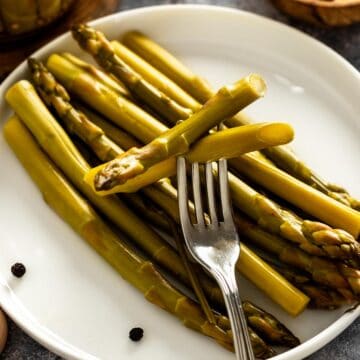
Quick Pickled Asparagus
INGREDIENTS
- 12 black peppercorns
- 2 medium garlic cloves, peeled and sliced thick
- 4 fresh dill sprigs
- 1 pound fresh asparagus 20-30 medium spears
- 1 ½ cups apple cider vinegar or white vinegar
- 1 cup water
- 2 teaspoon kosher salt or pickling salt
- 1 tablespoon mustard seeds
- 1 ½ teaspoons sugar
INSTRUCTIONS
- Prepare two sterilized 17-ounce jars. In each jar, add peppercorns, garlic cloves, and fresh dill sprigs.
- If needed, trim off the bottom of the asparagus spears and cut them in half crosswise to fit into the jars. Place the asparagus in the jars.
- In a medium saucepan, combine water, kosher salt, and sugar. Stir over medium heat until the salt and sugar have dissolved.
- Add vinegar and bring the mixture to a gentle boil over medium heat. Remove the saucepan from the stovetop.
- Carefully and slowly pour the hot vinegar mixture into the jars, leaving about ½ inch of space from the top.
- Seal the jars with lids and let them cool at room temperature.
- Once cooled, refrigerate the jars. Asparagus pickles will be ready to enjoy after 24 hours.
- You can store this pickled asparagus in the fridge for up to 3 weeks.
NOTES
- The serving amount is approximate.
- How to choose asparagus - Picking the perfect asparagus is essential for top-notch pickled veggies. And the best time to make this recipe is during asparagus season when it's at its peak of freshness (however it is available all year). Look for vibrant green hues and firm stalks while shopping. Opt for uniform thickness, steering clear of any wrinkled or soft spots – that's the key to the best-pickled asparagus!
- For even pickling, try to choose asparagus spears of similar size so they pickle uniformly.
- Ensure that the pickling brine completely covers the vegetables so they can pickle evenly and stay fresh for longer.
- Asparagus - For this recipe, you'll need 1 pound of asparagus, which is typically the size of the bundles sold at grocery stores. You have the option to go for either thick or thin asparagus. For pickling recipes, I always suggest using medium or thinner ones since they pickle faster and don't require blanching beforehand.
- Vinegar - You can use either apple cider vinegar or distilled white vinegar. Ensure that the vinegar you use has at least 5% acidity, which is typically found in most grocery store varieties.
- Salt - very fine sea salt, kosher salt, or pickling salt.
- Seasonings and spices - I used simple ingredients but to save time you can go for store-bought pickling spice which typically consists of similar ingredients such as mustard seeds, celery seeds, peppercorns, dill, and bay leaves.
ADD YOUR OWN PRIVATE NOTES
Note: Nutrition information is estimated and varies based on products used.
Full Nutrition Disclaimer can be found here.
This recipe was inspired by Pinch and Swirl.









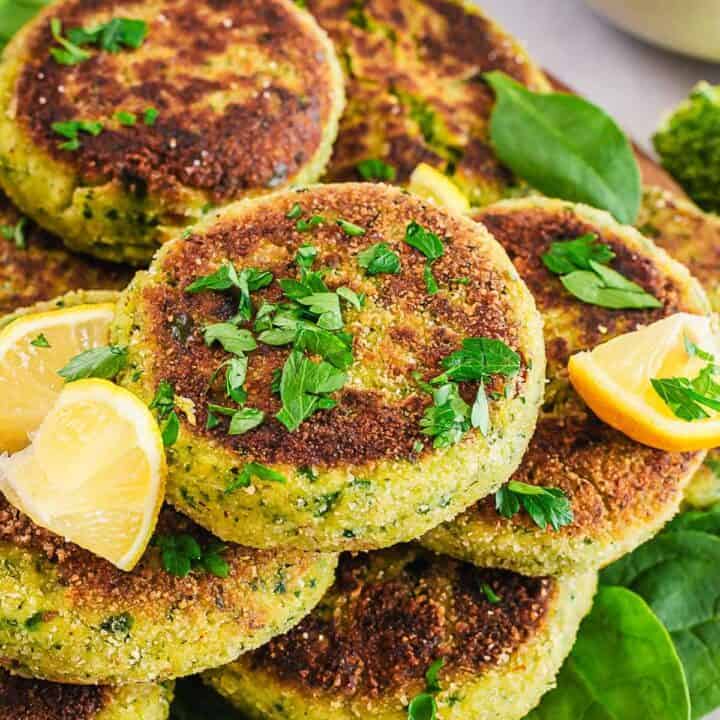
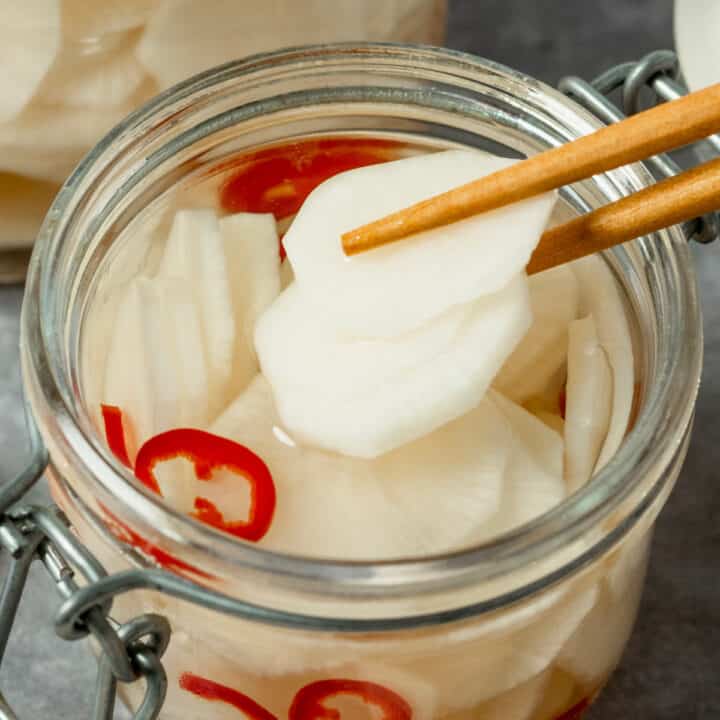


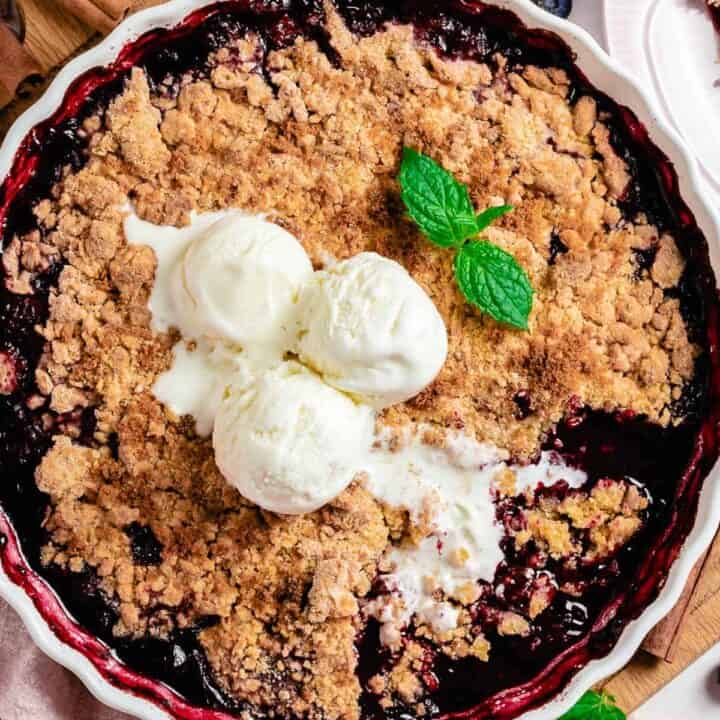

Julia | The Yummy Bowl
Enjoy this pickled asparagus as a flavorful side dish or topping for sandwiches and burgers!